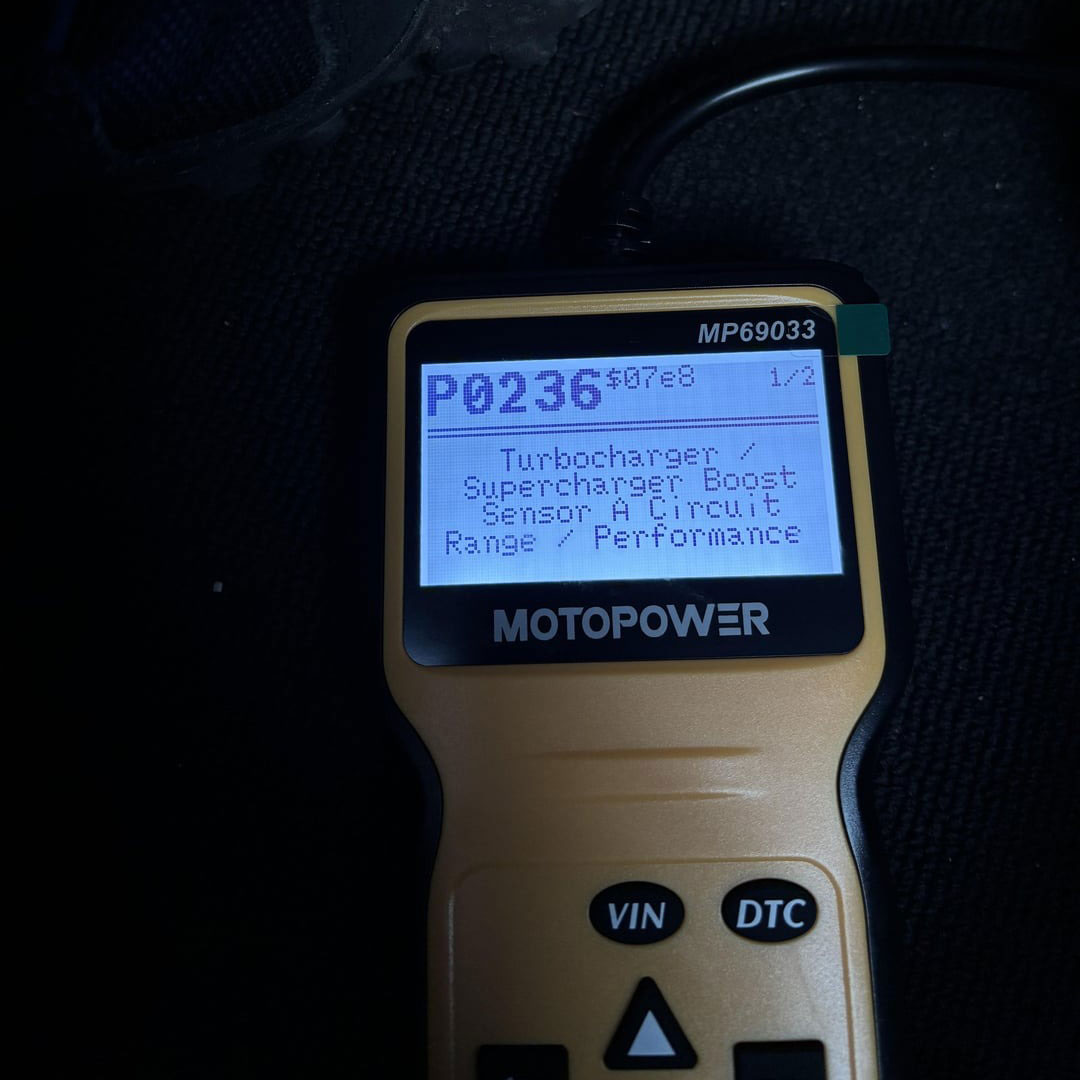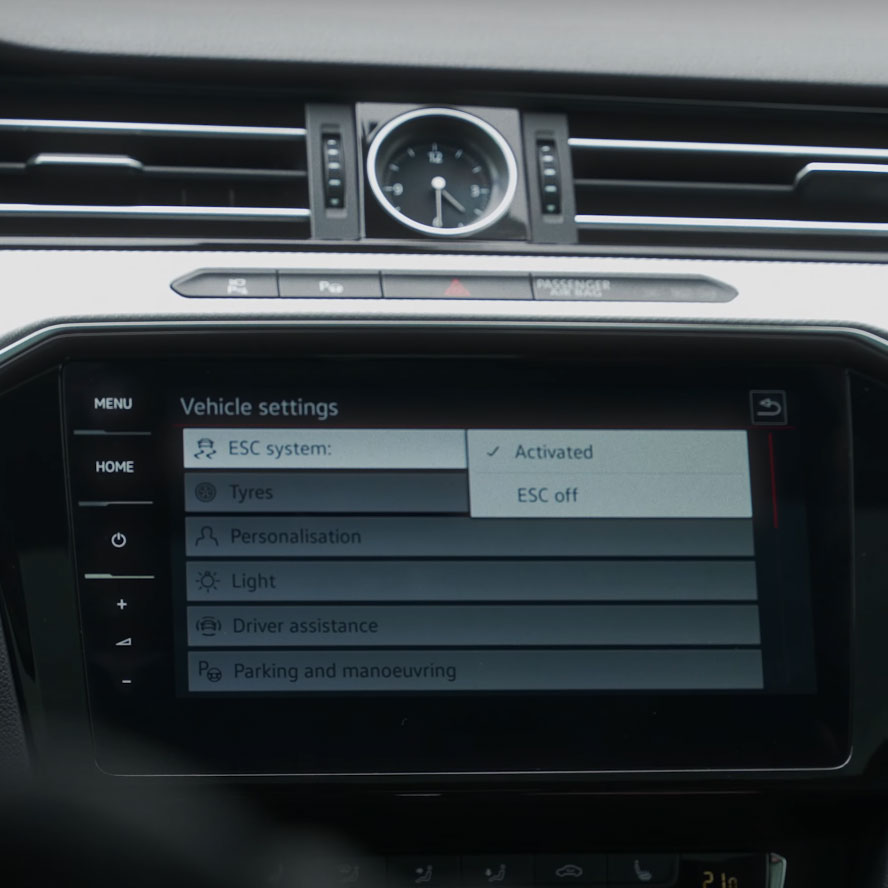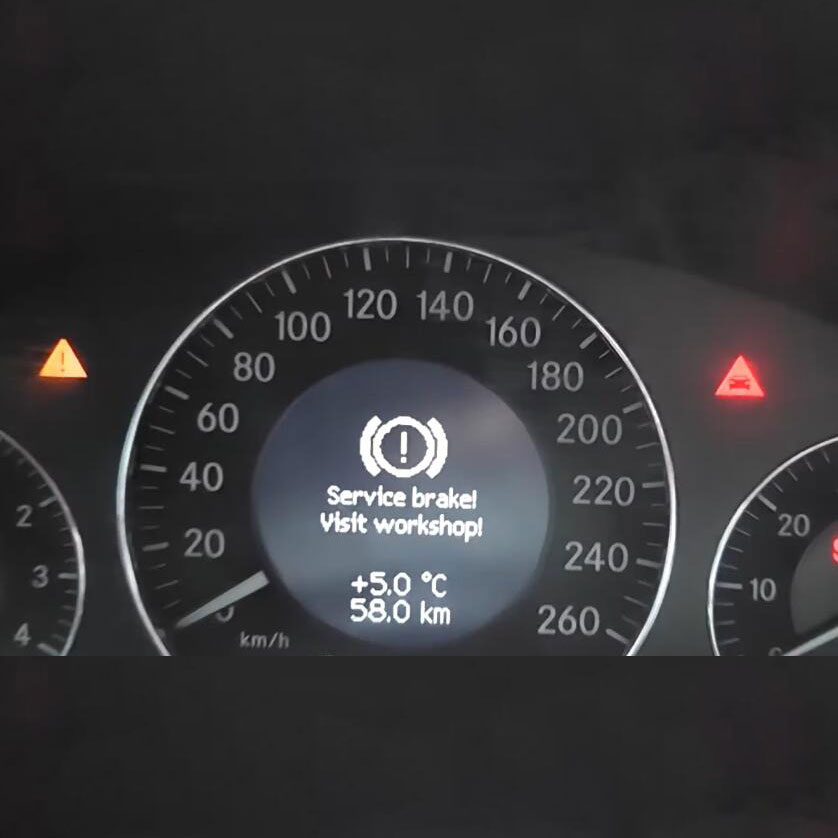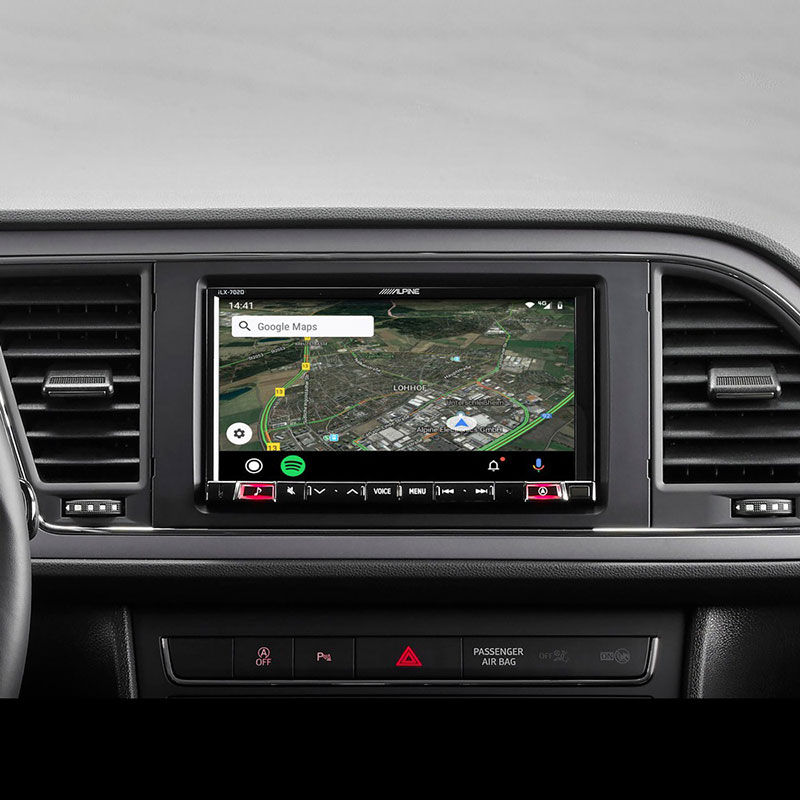
**Audi DTC P0441:02/01089:002 – What Does It Mean & How To Fix?**
Contents
- 1. What Does Audi DTC P0441:02/01089:002 Indicate?
- 2. What Are The Common Causes Of Audi DTC P0441:02/01089:002?
- 2.1. Leaks in the EVAP System
- 2.2. Faulty Purge Valve (N80)
- 2.3. Defective Canister Vent Valve
- 2.4. Problems with the Fuel Tank Pressure Sensor
- 2.5. Issues with Vacuum Lines
- 2.6. Charcoal Canister Problems
- 2.7. ECU Issues
- 3. What Are The Symptoms Associated With Audi DTC P0441:02/01089:002?
- 3.1. Check Engine Light
- 3.2. Poor Fuel Economy
- 3.3. Rough Idle
- 3.4. Difficulty Starting
- 3.5. Fuel Odor
- 3.6. Stalling
- 4. How To Diagnose Audi DTC P0441:02/01089:002?
- 4.1. Scan the Vehicle’s ECU
- 4.2. Visual Inspection
- 4.3. Purge Valve Test
- 4.4. Smoke Test
- 4.5. Fuel Tank Pressure Sensor Test
- 4.6. Component Testing with Multimeter
- 4.7. Consult with AutoExplain
- 5. How To Fix Audi DTC P0441:02/01089:002?
- 5.1. Replace the Fuel Cap
- 5.2. Repair or Replace Vacuum Lines
- 5.3. Replace the Purge Valve (N80)
- 5.4. Replace the Canister Vent Valve
- 5.5. Replace the Fuel Tank Pressure Sensor
- 5.6. Replace the Charcoal Canister
- 5.7. Address Electrical Issues
- 5.8. ECU Repair or Replacement
- 6. Step-By-Step Repair Guide for Audi DTC P0441:02/01089:002
- 7. Common Mistakes To Avoid When Fixing Audi DTC P0441:02/01089:002
- 7.1. Overlooking Simple Issues
- 7.2. Replacing Parts Without Proper Diagnosis
- 7.3. Neglecting Electrical Issues
- 7.4. Ignoring Related DTCs
- 7.5. Using Low-Quality Parts
- 8. How To Prevent Audi DTC P0441:02/01089:002?
- 8.1. Regular Maintenance
- 8.2. Proper Fuel Cap Care
- 8.3. Careful Refueling
- 8.4. Monitor Vehicle Performance
- 8.5. Prompt Repairs
- 9. Advanced Diagnostic Techniques for Audi DTC P0441:02/01089:002
- 9.1. Using a Scan Tool for Live Data
- 9.2. Oscilloscope Testing
- 9.3. Bi-Directional Control
- 9.4. Consult AutoExplain Experts
- 10. How AutoExplain Can Help With Your Audi DTC P0441:02/01089:002
- 10.1. Remote Diagnostics
- 10.2. ECU Programming
- 10.3. Software Installation
- 10.4. Expert Support
- 10.5. Save Time and Money
- 11. Why Choose AutoExplain?
- 11.1. Experienced Professionals
- 11.2. Cutting-Edge Technology
- 11.3. Customer-Focused Approach
- 11.4. Cost-Effective Solutions
- 11.5. Comprehensive Support
- 12. Case Studies: Resolving Audi DTC P0441:02/01089:002 with AutoExplain
- 12.1. Case Study 1: Faulty Purge Valve
- 12.2. Case Study 2: Vacuum Line Leak
- 13. FAQ: Audi DTC P0441:02/01089:002
- 13.1. What is the EVAP system?
- 13.2. Can I drive with the P0441 code?
- 13.3. How often should I check my EVAP system?
- 13.4. What tools do I need to diagnose the P0441 code?
- 13.5. Is it easy to replace the purge valve myself?
- 13.6. What is the N80 valve?
- 13.7. Can overfilling the gas tank cause the P0441 code?
- 13.8. How can AutoExplain help me with this code?
- 13.9. What are the common signs of a faulty EVAP system?
- 13.10. How do I perform a smoke test on my EVAP system?
- 14. Stay Informed: Latest Updates on EVAP System Technology
- 14.1. Enhanced Leak Detection
- 14.2. Advanced Sensor Technology
- 14.3. Integrated Diagnostic Systems
- 15. Contact AutoExplain for Expert Assistance
Audi Dtc P0441:02/01089:002 indicates an issue within the EVAP (Evaporative Emission Control) system, specifically pointing to an incorrect flow. Addressing this promptly is essential to maintaining optimal engine performance and minimizing emissions. AutoExplain is here to provide expert insights and remote support, ensuring your Audi runs smoothly and efficiently.
Here’s a comprehensive guide to help you understand and resolve the Audi DTC P0441:02/01089:002.
1. What Does Audi DTC P0441:02/01089:002 Indicate?
Audi DTC P0441:02/01089:002 signifies an “Incorrect Flow” within the Evaporative Emission Control (EVAP) system. This system is designed to prevent fuel vapors from escaping into the atmosphere. When the engine control unit (ECU) detects an improper flow rate, it triggers this diagnostic trouble code (DTC).
The EVAP system captures fuel vapors from the fuel tank and temporarily stores them in a charcoal canister. Under specific engine operating conditions, these vapors are purged from the canister and directed into the engine to be burned, reducing emissions. When the flow isn’t correct, it could indicate leaks, valve malfunctions, or sensor issues within the system.
2. What Are The Common Causes Of Audi DTC P0441:02/01089:002?
Several factors can trigger the Audi DTC P0441:02/01089:002. Understanding these can help in effective diagnostics and repair:
2.1. Leaks in the EVAP System
Leaks are a common culprit behind the P0441 code. These leaks can occur at any point in the EVAP system, causing the incorrect flow.
2.2. Faulty Purge Valve (N80)
The purge valve, often referred to as the N80 valve in Audi vehicles, controls the flow of fuel vapors from the charcoal canister to the engine. A malfunctioning valve can cause incorrect flow rates.
2.3. Defective Canister Vent Valve
The canister vent valve allows fresh air into the charcoal canister during the purge process. If this valve is stuck closed or open, it can disrupt the proper flow.
2.4. Problems with the Fuel Tank Pressure Sensor
The fuel tank pressure sensor monitors the pressure within the fuel tank. Inaccurate readings from this sensor can lead to incorrect flow calculations by the ECU.
2.5. Issues with Vacuum Lines
Damaged, cracked, or disconnected vacuum lines can cause leaks and disrupt the proper functioning of the EVAP system.
2.6. Charcoal Canister Problems
A saturated or damaged charcoal canister can impede the correct flow of fuel vapors.
2.7. ECU Issues
Although less common, problems with the ECU itself can sometimes trigger the P0441 code.
3. What Are The Symptoms Associated With Audi DTC P0441:02/01089:002?
Recognizing the symptoms associated with the Audi DTC P0441:02/01089:002 can help you identify the problem early:
3.1. Check Engine Light
The most obvious symptom is the illumination of the check engine light on the dashboard.
3.2. Poor Fuel Economy
An inefficient EVAP system can lead to a richer fuel mixture, resulting in decreased fuel economy.
3.3. Rough Idle
The engine may exhibit a rough idle, particularly when the EVAP system is purging fuel vapors.
3.4. Difficulty Starting
In some cases, a faulty EVAP system can cause difficulty starting the engine, especially after refueling.
3.5. Fuel Odor
A noticeable fuel odor, especially around the fuel tank or charcoal canister, can indicate a leak in the EVAP system.
3.6. Stalling
The engine may stall, particularly when the EVAP system is actively purging.
4. How To Diagnose Audi DTC P0441:02/01089:002?
Diagnosing the Audi DTC P0441:02/01089:002 requires a systematic approach. Here’s how to do it:
4.1. Scan the Vehicle’s ECU
Use an OBD-II scanner to confirm the presence of the P0441 code and check for any other related codes.
4.2. Visual Inspection
Perform a thorough visual inspection of all EVAP system components, including:
- Fuel cap: Ensure it is properly sealed.
- Vacuum lines: Check for cracks, damage, or disconnections.
- Charcoal canister: Look for any signs of damage or saturation.
- Purge valve: Inspect for proper electrical connections and physical damage.
4.3. Purge Valve Test
Test the purge valve (N80) to ensure it is functioning correctly:
- Use a multimeter to check the valve’s resistance.
- Apply voltage to the valve to see if it opens and closes properly.
- Listen for a clicking sound when the valve is activated.
4.4. Smoke Test
A smoke test is an effective way to detect leaks in the EVAP system. This involves injecting smoke into the system and observing where it escapes.
4.5. Fuel Tank Pressure Sensor Test
Check the fuel tank pressure sensor to ensure it is providing accurate readings:
- Use a scan tool to monitor the sensor’s output.
- Compare the readings with the manufacturer’s specifications.
4.6. Component Testing with Multimeter
Use a multimeter to check continuity and voltage at various points in the EVAP system to identify electrical issues.
4.7. Consult with AutoExplain
If you’re unsure about any of these steps or encounter difficulties, AutoExplain offers remote diagnostic support to guide you through the process.
5. How To Fix Audi DTC P0441:02/01089:002?
Fixing the Audi DTC P0441:02/01089:002 involves addressing the root cause of the problem. Here are some potential solutions:
5.1. Replace the Fuel Cap
If the fuel cap is damaged or not sealing properly, replace it with a new one.
5.2. Repair or Replace Vacuum Lines
Repair any damaged vacuum lines or replace them if they are cracked or deteriorated.
5.3. Replace the Purge Valve (N80)
If the purge valve is faulty, replace it with a new, OEM-quality valve.
5.4. Replace the Canister Vent Valve
If the canister vent valve is defective, replace it to ensure proper airflow in the EVAP system.
5.5. Replace the Fuel Tank Pressure Sensor
If the fuel tank pressure sensor is providing inaccurate readings, replace it with a new sensor.
5.6. Replace the Charcoal Canister
If the charcoal canister is saturated or damaged, replace it to ensure proper vapor storage and flow.
5.7. Address Electrical Issues
Repair any electrical issues, such as damaged wiring or faulty connectors, that may be affecting the EVAP system.
5.8. ECU Repair or Replacement
In rare cases, if the ECU is the source of the problem, it may need to be repaired or replaced.
Alt Text: An illustrated diagram showcasing the components and layout of a typical Audi EVAP (Evaporative Emission Control) system.
6. Step-By-Step Repair Guide for Audi DTC P0441:02/01089:002
Follow these steps to systematically diagnose and repair the Audi DTC P0441:02/01089:002:
-
Initial Scan: Use an OBD-II scanner to confirm the presence of the P0441 code and any related codes.
-
Visual Inspection: Check the fuel cap, vacuum lines, charcoal canister, and purge valve for any visible damage or disconnections.
-
Fuel Cap Test: Ensure the fuel cap is sealing properly. Replace if necessary.
-
Vacuum Line Repair: Repair or replace any damaged vacuum lines.
-
Purge Valve Test:
- Disconnect the purge valve connector.
- Use a multimeter to check the resistance across the valve terminals. Compare with the manufacturer’s specifications.
- Apply 12V to the valve to see if it opens and closes properly.
- Replace the valve if it fails any of these tests.
-
Canister Vent Valve Test:
- Locate the canister vent valve.
- Disconnect the valve connector.
- Check the valve’s resistance with a multimeter.
- Apply voltage to the valve to see if it operates correctly.
- Replace the valve if it is faulty.
-
Smoke Test:
- Connect a smoke machine to the EVAP system.
- Introduce smoke into the system and check for leaks.
- Repair any leaks that are found.
-
Fuel Tank Pressure Sensor Test:
- Use a scan tool to monitor the fuel tank pressure sensor output.
- Compare the readings with the manufacturer’s specifications.
- Replace the sensor if it is inaccurate.
-
Clear Codes and Retest: After performing the necessary repairs, clear the DTCs and perform a test drive to see if the P0441 code returns.
-
Professional Consultation: If the code persists, consult with AutoExplain for expert remote diagnostic support.
7. Common Mistakes To Avoid When Fixing Audi DTC P0441:02/01089:002
Several common mistakes can hinder the proper diagnosis and repair of the Audi DTC P0441:02/01089:002. Here are some to avoid:
7.1. Overlooking Simple Issues
Failing to check simple components like the fuel cap or vacuum lines can lead to unnecessary and costly repairs.
7.2. Replacing Parts Without Proper Diagnosis
Replacing parts without accurately diagnosing the problem can result in wasted time and money. Always perform thorough testing before replacing any components.
7.3. Neglecting Electrical Issues
Ignoring potential electrical problems, such as damaged wiring or faulty connectors, can prevent the EVAP system from functioning correctly.
7.4. Ignoring Related DTCs
Failing to address other related DTCs can lead to misdiagnosis and incomplete repairs.
7.5. Using Low-Quality Parts
Using low-quality or non-OEM parts can compromise the performance and reliability of the EVAP system.
8. How To Prevent Audi DTC P0441:02/01089:002?
Preventing the Audi DTC P0441:02/01089:002 involves regular maintenance and careful attention to your vehicle:
8.1. Regular Maintenance
Follow the manufacturer’s recommended maintenance schedule, including inspections of the EVAP system.
8.2. Proper Fuel Cap Care
Ensure the fuel cap is always properly tightened after refueling and replace it if it shows any signs of damage.
8.3. Careful Refueling
Avoid overfilling the fuel tank, as this can saturate the charcoal canister and cause EVAP system problems.
8.4. Monitor Vehicle Performance
Pay attention to any changes in fuel economy, engine performance, or unusual odors, as these can be early indicators of EVAP system issues.
8.5. Prompt Repairs
Address any detected issues promptly to prevent them from escalating into more significant problems.
9. Advanced Diagnostic Techniques for Audi DTC P0441:02/01089:002
For complex cases, advanced diagnostic techniques can be necessary to pinpoint the exact cause of the Audi DTC P0441:02/01089:002:
9.1. Using a Scan Tool for Live Data
A high-quality scan tool can provide live data from the fuel tank pressure sensor, purge valve, and other EVAP system components, allowing you to monitor their performance in real-time.
9.2. Oscilloscope Testing
An oscilloscope can be used to analyze the electrical signals of the purge valve and other components, providing detailed information about their operation.
9.3. Bi-Directional Control
Some advanced scan tools offer bi-directional control, allowing you to activate and deactivate EVAP system components to test their functionality.
9.4. Consult AutoExplain Experts
AutoExplain’s team of experts can provide advanced diagnostic support, including remote access to your vehicle’s ECU and detailed analysis of diagnostic data.
10. How AutoExplain Can Help With Your Audi DTC P0441:02/01089:002
AutoExplain specializes in providing remote diagnostic, programming, and software installation services to help you resolve complex automotive issues like the Audi DTC P0441:02/01089:002. Here’s how we can assist you:
10.1. Remote Diagnostics
Our experienced technicians can remotely access your vehicle’s ECU to perform comprehensive diagnostics, identify the root cause of the problem, and provide step-by-step repair guidance.
10.2. ECU Programming
If the issue requires ECU reprogramming, we can perform this remotely, ensuring your vehicle’s computer is running the latest software and operating parameters.
10.3. Software Installation
We can remotely install necessary software updates and patches to resolve software-related issues that may be contributing to the P0441 code.
10.4. Expert Support
Our team of automotive experts is available to provide technical support and answer any questions you may have throughout the diagnostic and repair process.
10.5. Save Time and Money
By utilizing our remote services, you can save time and money compared to traditional repair shop visits, without compromising on quality or expertise.
Alt Text: A skilled technician is using advanced diagnostic software to assess the electronic control unit (ECU) of a car, aiming to identify and resolve complex issues.
11. Why Choose AutoExplain?
Choosing AutoExplain means opting for expertise, convenience, and reliability:
11.1. Experienced Professionals
Our team consists of highly skilled and experienced automotive technicians and engineers.
11.2. Cutting-Edge Technology
We utilize the latest diagnostic tools and software to provide accurate and efficient remote services.
11.3. Customer-Focused Approach
We are committed to providing exceptional customer service and support, ensuring your complete satisfaction.
11.4. Cost-Effective Solutions
Our remote services offer a cost-effective alternative to traditional repair shops, saving you time and money.
11.5. Comprehensive Support
From initial diagnostics to final repairs, we provide comprehensive support throughout the entire process.
12. Case Studies: Resolving Audi DTC P0441:02/01089:002 with AutoExplain
Here are a couple of case studies demonstrating how AutoExplain has successfully resolved the Audi DTC P0441:02/01089:002 for our clients:
12.1. Case Study 1: Faulty Purge Valve
A client in California was experiencing the P0441 code on their Audi A4. After performing a remote diagnostic session, our technicians determined that the purge valve was faulty. We guided the client through the replacement process, and after clearing the code, the issue was resolved.
12.2. Case Study 2: Vacuum Line Leak
Another client in Texas had the same P0441 code on their Audi Q5. Through our remote diagnostics, we identified a leak in one of the vacuum lines. The client was able to repair the line following our instructions, and the code was cleared, restoring the vehicle’s performance.
13. FAQ: Audi DTC P0441:02/01089:002
13.1. What is the EVAP system?
The Evaporative Emission Control (EVAP) system prevents fuel vapors from escaping into the atmosphere, capturing them in a charcoal canister and purging them into the engine for combustion.
13.2. Can I drive with the P0441 code?
While it’s generally safe to drive with the P0441 code, it’s not recommended. The issue can affect fuel economy and emissions, and it’s best to address it promptly.
13.3. How often should I check my EVAP system?
It’s recommended to have your EVAP system inspected as part of your regular maintenance schedule, typically every 30,000 to 60,000 miles.
13.4. What tools do I need to diagnose the P0441 code?
You’ll need an OBD-II scanner, a multimeter, a smoke machine, and basic hand tools.
13.5. Is it easy to replace the purge valve myself?
Replacing the purge valve is relatively straightforward, but it requires some mechanical knowledge and the right tools. If you’re not comfortable doing it yourself, consider seeking professional assistance.
13.6. What is the N80 valve?
The N80 valve is the purge valve in Audi vehicles, responsible for controlling the flow of fuel vapors from the charcoal canister to the engine.
13.7. Can overfilling the gas tank cause the P0441 code?
Yes, overfilling the gas tank can saturate the charcoal canister, leading to EVAP system problems and potentially triggering the P0441 code.
13.8. How can AutoExplain help me with this code?
AutoExplain offers remote diagnostic services, ECU programming, and expert support to help you identify and resolve the root cause of the P0441 code.
13.9. What are the common signs of a faulty EVAP system?
Common signs include the check engine light, poor fuel economy, rough idle, difficulty starting, and fuel odor.
13.10. How do I perform a smoke test on my EVAP system?
A smoke test involves connecting a smoke machine to the EVAP system and introducing smoke to check for leaks. If you’re not familiar with the process, it’s best to seek professional assistance.
14. Stay Informed: Latest Updates on EVAP System Technology
Keep up-to-date with the latest advancements in EVAP system technology. Modern vehicles are equipped with increasingly sophisticated emission control systems, making it essential to stay informed about new diagnostic and repair techniques.
14.1. Enhanced Leak Detection
Newer systems incorporate more sensitive leak detection methods, reducing the likelihood of undetected EVAP system problems.
14.2. Advanced Sensor Technology
Modern fuel tank pressure sensors and purge valves are more accurate and reliable, providing better control over the EVAP system.
14.3. Integrated Diagnostic Systems
Advanced vehicles feature integrated diagnostic systems that can provide detailed information about the EVAP system’s performance, making it easier to identify and resolve issues.
15. Contact AutoExplain for Expert Assistance
Don’t let the Audi DTC P0441:02/01089:002 keep you from enjoying your vehicle. Contact AutoExplain today for expert remote diagnostic, programming, and software installation services.
- Address: 1500 N Grant ST Sten Denver, CO 80203
- WhatsApp: +1(936)2896695
- Email: [email protected]
- Website: AutoExplain.com
Let AutoExplain help you resolve your automotive issues quickly and efficiently. Contact us via WhatsApp or email for immediate support and get your Audi running smoothly again.


How to Deactivate ESC in Volkswagen, Audi, Skoda, or SEAT

Mercedes Benz ‘Service Brake Visit Workshop’ Warning? Here’s What Dealers Don’t Tell You!

How to Perform Seat Navigation Update? – A Comprehensive Guide for Technicians






